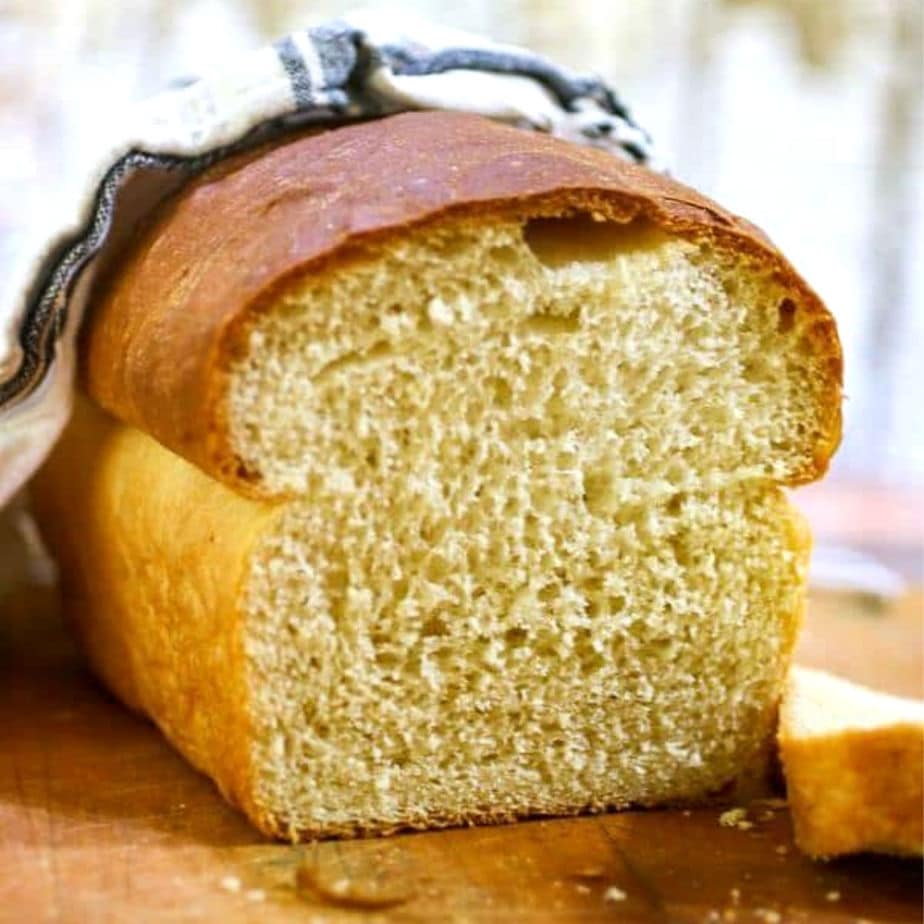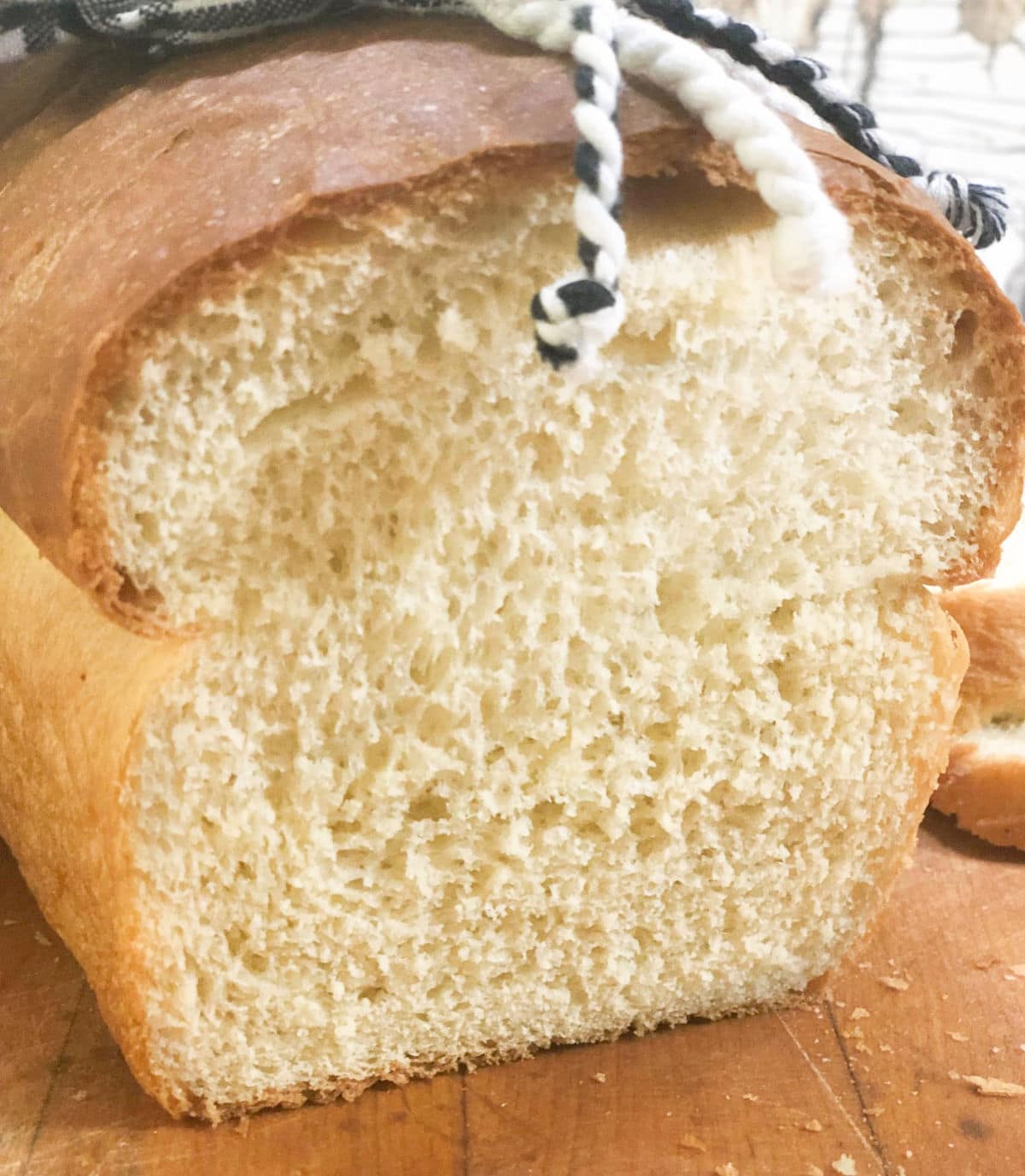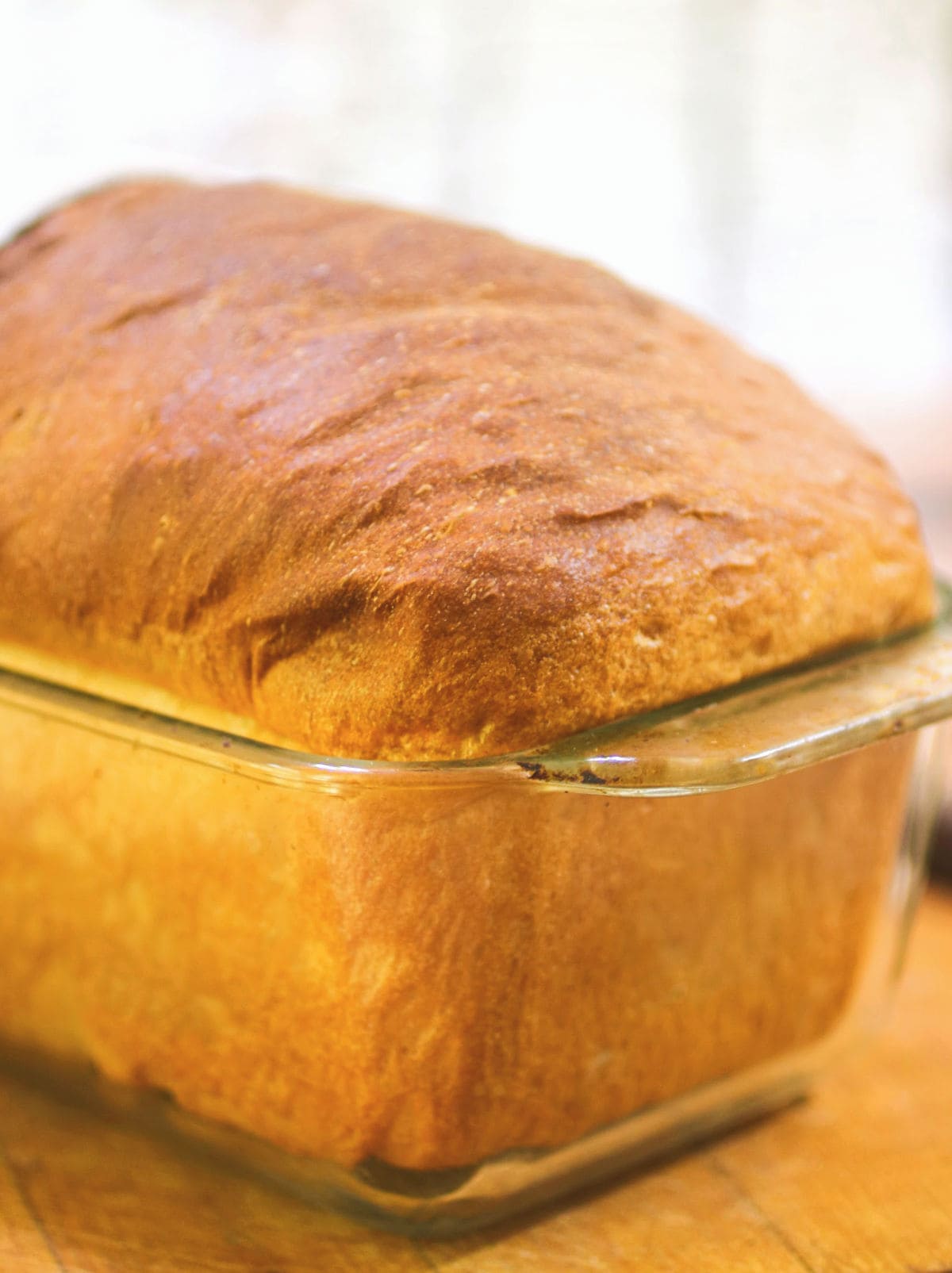Honey buttermilk bread is so unbelievably light that no one will believe it’s made from scratch.

🧾 Ingredients

Here are the ingredients for this soft sandwich bread.- I used active dry yeast but you can use rapid rise if you want – just follow the instructions on the packet of yeast.
- Buttermilk in bread adds a little flavor but mostly it creates that soft, tender crumb we all love. If you don’t have any you can read this article on how to make buttermilk.
- Salt – kosher salt was used. If you use regular table salt cut the amount by about ¼th or so.
- Bread flour – you can use all purpose flour if you like. There might be a tiny difference in how high it rises. Take a look at this list of different types of flour and how to use them.
📖 Recipe

Honey Buttermilk Bread Recipe
Why You’ll Love It: Soft, fluffy, and foolproof, this fan-favorite buttermilk bread has over 900 five-star reviews – plus, it’s ready start-to-finish in just three hours. Perfect for beginners, impressive enough for bragging rights.
Course Yeast Bread
Cuisine Amercian Heritage
Prep Time:15minutes
Cook Time:30minutes
Rising time:2hours 15minutes
Total Time:3hours
Servings:20 (2 loaves)
Calories:188
Ingredients
- 1 tablespoon yeast, or 1 packet
- 1 pinch powdered ginger
- 1 teaspoon sugar
- ¼ cup water, warm, 105F – 110F
- 2 cups cultured buttermilk, warm, 105F – 110F
- ⅓ cup honey
- 1 teaspoon kosher salt, if using table salt use ¾ teaspoon
- ¾ teaspoon baking soda
- 6 cups bread flour, you may use all-purpose flour
- ¼ cup butter, melted and cooled so that it is warm to the touch but not hot.
Instructions
-
In a medium sized bowl mix the yeast, ginger, sugar, and 110F water.
-
Set aside for 5 minutes or until foamy.
-
Whisk the buttermilk, honey, salt, and baking soda together and add it to the yeast mixture.
-
Add three cups of flour and mix until smooth, about 3 to 5 minutes on low of a stand mixer.
-
Pour in the butter until it is totally mixed into the batter.
-
Add the rest of the flour, one cup at a time, keeping mixer on low speed.
-
When dough pulls from the sides of the bowl remove it from the mixer to a lightly floured surface. Knead until elastic and smooth. You can also knead in your mixer according to manufacturer’s directions.
-
Place in greased bowl, turn to grease the top, and cover bowl with a clean tea towel.
-
Allow the dough to rise for 1 ½ hours, or until double.
-
Punch down and form into two loaves. Place each in a greased loaf pan with seam sides down. Grease tops.
-
Cover, and allow to rise in a warm place for 45 minutes, or until it is just about to the tops of the bread pans.
-
Preheat oven to 375F.
-
Bake for 30 minutes. You can cover the tops with foil if they brown too fast.
-
Remove from oven and brush top of the loaves with melted butter. Place on cooling rack.
-
Allow to cool in pans for 10 minutes.
-
Gently run a knife around the edge between the bread and the pan to loosen it.
-
Turn out and cool completely on a rack.
-
Cover the loaves if you want soft crusts.
Notes
You can use any bread pans that you have – I just prefer glass. The ones I use are 9×4 pyrex which I believe are the 1.5 quart size.
Storage:
Fresh, homemade bread should be eaten within a day or 2 or frozen.
Tips
- You may need more or less flour than called for in the recipe. Weather and climate can affect your ingredients – humidity will often mean you’ll need at least an extra ¼ cup or so of flour. If you bake bread on a rainy day it will rise higher than on a clear one due to air pressure!
- Make sure all ingredients are at room temperature.
- Use yeast that is within the sell by date. If your bread dough isn’t rising well it could be that the yeast is too old..
- Make sure your liquids are not more than 110F. Check with a insta-read thermometer. If the liquids are too hot the yeast will die.
- Be sure to fully knead the dough. It develops the flavor and texture – and will take 8 to 10 minutes by hand.
- Grease the top of the dough before rising.
- Let the dough rise in a warm spot.
- If you feel the bread gets too brown at 375f bake at 350 f.
- Cool the baked bread in the pan for 10 minutes then turn out to finish cooling.
- Brush the loaves with butter while still hot and then cover with a clean tea towel while cooling for soft crusts.
Need to adjust for high altitude? Check out the instructions from Utah State University.
Nutrition Facts
Calories: 188kcal | Carbohydrates: 33g | Protein: 5g | Fat: 3g | Saturated Fat: 2g | Cholesterol: 8mg | Sodium: 183mg | Potassium: 72mg | Sugar: 6g | Vitamin A: 110IU | Calcium: 34mg | Iron: 0.4mg
Nutrition information is estimated as a courtesy. If using for medical purposes, please verify information using your own nutritional calculator. Percent Daily Values are based on a 2000 calorie diet.
This recipe has been tested several times. If you choose to use other ingredients, or change the technique in some way, the results may not be the same.
If you’ve never worked with homemade yeast dough before take a look at this breadmaking guide before you get started. It answers about any question you could have.
🍞 Bread machine instructions
Many of you have asked how to make buttermilk bread in a bread machine. One reader, Debbie, did and this is what she said:
“If you want to make it and bake it in a bread machine cut the buttermilk bread recipe in half, set it on white bread setting, and add ingredients in this order (or according to your manufacturer’s instructions):
- Water
- Buttermilk
- Butter
- Honey
- Sugar
- Salt
- Flour mixed with ginger and baking soda
- Yeast
-
Stacy
🥫 How to freeze unbaked bread dough
To freeze unbaked dough you’ll want to double the amount of yeast called for in the recipe and then freeze the dough after shaping it into loaves.
When ready to bake let the loaves thaw overnight in the refrigerator then finish rising at room temperature. It will take a bit longer to rise than normal.
Bake as directed in the recipe.

📖 Variations
This is one of those easy bread recipes that you can change up by adding other ingredients.
- Knead in raisins and add sugar and cinnamon before shaping for a wonderful cinnamon raisin bread – use shaping instructions in this cinnamon swirl bread recipe.
- The rich texture of buttermilk bread makes it perfect for slicing thickly and making into French toast.
- If it gets a bit stale make it into bread pudding. Yum!
- This makes a great buttermilk dinner rolls recipe, too! Just shape into rolls and bake at 375f for 10 to 15 minutes.
💭 Things to know
Expert tip: You may need more or less flour than called for in the recipe. Weather and climate can affect your ingredients – humidity will often mean you’ll need at least an extra ¼ cup or so of flour. If you bake bread on a rainy day it will rise higher than on a clear one due to air pressure!
- Make sure all ingredients are at room temperature.
- Use yeast that is within the sell by date. If your bread dough isn’t rising well it could be that the yeast is too old.
- If you’re short on time you can let the bread rise in the refrigerator overnight for either the first or second rising time.
- The baking soda does two things… It works with the acid in the buttermilk to help the bread rise high and light and balances any off tastes from the acids in the buttermilk.
- Make sure your liquids are not hotter than 110F. Check with an insta-read thermometer. If the liquids are too hot the yeast will die.
- Be sure to fully knead the dough. It develops the flavor and texture – and will take 8 to 10 minutes by hand of kneading vigorously.
- Grease the top of the dough before rising.
- Let dough rise in a warm spot. A draft-free place is best.
- If you like the crust a darker golden brown brush it with egg yolk mixed with a teaspoon of water just before putting in the oven.
- Cool the baked bread in the pan for 10 minutes then turn out to finish cooling.
- Brush the loaves with butter while still hot and then cover with a clean tea towel while cooling for soft crusts.
- Here’s how to use up that leftover buttermilk!


